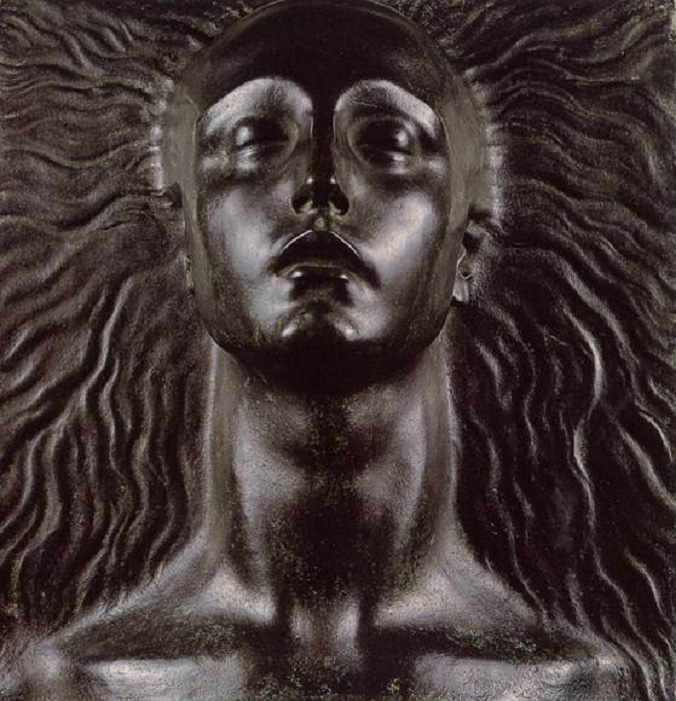Click here to view image
First games
Eredi Monteverde 1919 Genova - donazione
Monteverde, Giulio
sculpture
1874 - 1874 - XIX
GAM0221
Unità di misura: cm; Altezza: 99; Larghezza: 58; Profondità: 56.5
scultura in gesso
Click here to view image
First games
Eredi Monteverde 1919 Genova - donazione
Monteverde, Giulio
sculpture
1874 - 1874 - XIX
GAM0221
Unità di misura: cm; Altezza: 99; Larghezza: 58; Profondità: 56.5
scultura in gesso
Click here to view image
Portrait of Giulia Lavacci Centurione Scotto
M. Carlo Centurione Scotto - donazione
Lenbach, Franz Seraph von
painting
1884 - 1884 - XIX
GAM2426
Unità di misura: cm; Altezza: 116; Larghezza: 85
olio su tela
Portrait of a gentlewoman.
Click here to view image
Vault of the Hall of Autumn and vault of the Hall of Winter
Piola, Domenico
fresco
affresco
Domenico Piola painted the vaults of the last two east rooms of the second piano nobile of Palazzo Rosso between 1687 and 1688, as the balances of payments concerning him attest. This was the period following his return from the journey-escape undertaken in 1684, following the French bombardment of the city, which took him to various places in northern Italy and especially to Parma, where he had the opportunity to compare and update on Correggio's solutions his way of conceiving painted space in relation to architectural space. This experience, and, at the same time, the contact with Gregorio De Ferrari, his son-in-law and pupil, gave his language a looser lightness, especially in the practice of a lighter and less full-bodied use of color, which is associated with a taste for open space and for composition understood in a rotating sense. These elements are discernible in the design of the rooms with the allegories of Autumn and Winter, where Domenico availed himself of the collaboration of the plasterer Giacomo Muttone and the Bolognese quadraturist Stefano Monchi. The theme of Autumn is resolved with the traditional depiction of the triumph of Bacchus. The vault depicts, bathed in a clear diffused light, the god not intent, however, on unbridled celebrations, but young, beardless, caught in a moment of quiet tenderness when, having arrived on the island of Naxos, he met Ariadne, abandoned there by Theseus, fell in love with her and wanted her as his bride. The result is a painting in which drawing, as the structuring element of the image, gives way to color, which, through slight light transitions, shapes bodies and spatial planes. The Bacchic, animated and lively thiasus is relegated to the margins of the composition: intoxicated Silenus, bacchants, centaurs, satyrs and the animals dear to Dionysus - goats, panthers, monkeys - master lunettes and corbels with more vivid and plastic chromatic registers, in pleasing, dialogic contrast with the vault. The beautiful gilded stucco frieze running along the four sides of the room, in a continuous succession of vine shoots, not only reiterates the theme of the season but also gives the cue for the decorative motif of the frame of the large mirror placed between the windows. In the Winter Room, Piola implements absolute freedom in the layout of space. The plastic intertwining of the bodies of the winter winds is contrasted by Winter, exceptionally young and clothed in pale, warming himself at the brazier, with Marzo or Favonio behind him, while allusions to carnival and hunting, enriched with exotic animals and characters, enliven the edges of the vault, barely contained by a mighty painted balustrade. Scenes of banquets, musicians, idleness, playful brawls, or children's games make for an overall lively and dynamic reading of this fresco, both thematically and in terms of the perception of the painted space, an effect accentuated by Nicolò Codazzi's trompe-l'œil architectural perspectives on the walls. Fresco allegory of autumn and winter.

Click here to view image
Ophelia
Mostra Soc. Promotrice B. A. 1923 Genova - acquisto
Messina, Francesco
high relief
1901 - 1995 - XX
GAM0377
Unità di misura: cm; Altezza: 40,3; Larghezza: 38; Varie: Misure con cornice: 70,2 x 68,2
fusione in bronzo
The work depicts Ophelia. She is one of the main female characters in the tragedy Hamlet (The Tragical History of Hamlet, Prince of Denmark, in the original language), written between 1600 and 1602 by the British playwright William Shakespeare.

Click here to view image
Naivety
Eredi Monteverde 1919 Genova - donazione
Monteverde, Giulio
sculpture
1872 - 1872 - XIX
GAM 223
Unità di misura: cm; Altezza: 95; Larghezza: 32; Profondità: 49
scultura in gesso
Click here to view image
Madonna and Child
De Albertis, Edoardo
sculpture
1880 - 1950 - XVIII-XIX
GAM0947
Unità di misura: cm; Altezza: 81; Larghezza: 109,5; Profondità: 20
marmo scolpito
Click here to view image
The sailor's farewell
Grossi, Francesco 1939 Genova - legato
Mariani, Pompeo
painting
1897 - 1897 - XIX
GAM969
Unità di misura: cm; Altezza: 170; Larghezza: 110; Varie: Misure con cornice: altezza x larghezza cm 223.5 x 161
olio su tela
Painting on canvas depicting two young people at the harbour saying goodbye before the sailor's departure.
Click here to view image
The port of Genoa in 1850
Galassi, Gustavo 1932 Roma - acquisto
Caffi, Ippolito
painting
1850 - 1850 - XIX
GAM658
Unità di misura: cm; Altezza: 54; Larghezza: 82; Varie: Misure con cornice: altezza x larghezza cm 73.5 x 102
pittura a olio su tela
Painting on rectangular canvas depicting the port area of Genoa in the mid-19th century.
Click here to view image
View of Genoa from Villa delle Peschiere
Premio Mostra Società Promotrice di Belle Arti 1865 Genova - premio
Zanetti Borzino, Leopoldina
painting
1858 - 1858 - XIX
GAM 161
Unità di misura: cm; Altezza: 44; Larghezza: 61; Varie: Misure con cornice: cm 64.5 x 81
olio su tela
Società promotrice di Belle Arti - XIV Esposizione - Sale dell'Accademia Ligustica, Genova - 1865
The painting was awarded to the Municipality of Genoa in the annual draw held by the Società Promotrice di Belle Arti (Society for the Promotion of Fine Arts) in 1858. The painting depicts a view from the terrace of Villa delle Peschiere in Genoa.
Click here to view image
Hermitage of Ceres from the Theatre of Libarna
ambito italiano
Hermitage of Ceres from the Theatre of Libarna (AL)
erma
II CE - 101 - 150
Unità di misura: cm; Altezza: 17
marmo bianco
The head is broken at the neck with a clean cut at the back, allowing it to be identified as a hermit or decorative element, to be viewed only from the front. The face is oval, slightly asymmetrical on the right, with a low forehead. The eyes are large and the eyelids fleshy. The lower eyelid is emphasised by an incised line. The nostrils are marked by deep wrinkles. The mouth has a lower lip that is much fuller than the upper lip and is emphasised by a deep dimple. The forehead is framed by hair that falls in large waves from the centre parting and then falls in a compact mass along the neck. The hair is topped by a double crown of wheat ears, a reference to the cult of fertility, which is linked to the college of the Fratres Alvares, an institution founded by Romulus and reformed by Augustus, with frequent appearances of the attribute in various imperial portraits. Perhaps the hermit is to be identified as the personification of Ceres. From the theatre of Libarna, in the province of Alessandria.



Headquarters:
Municipality of Genoa - Palazzo Tursi
Via Garibaldi 9 - 16124 Genoa
C.F / VAT 00856920102